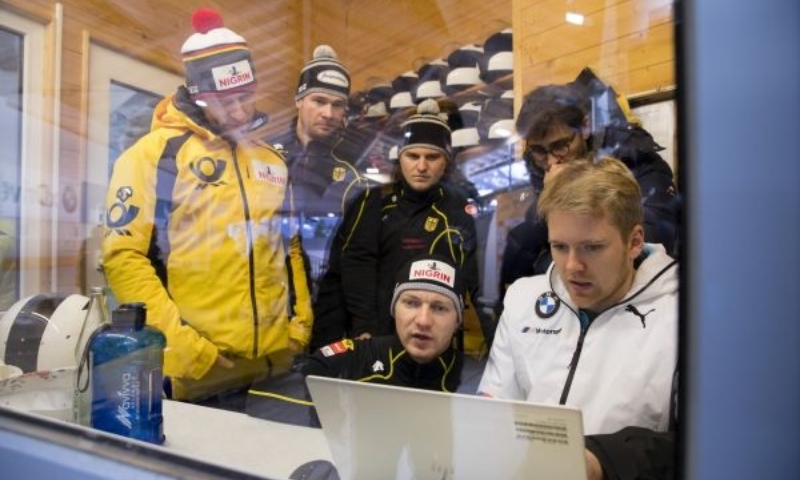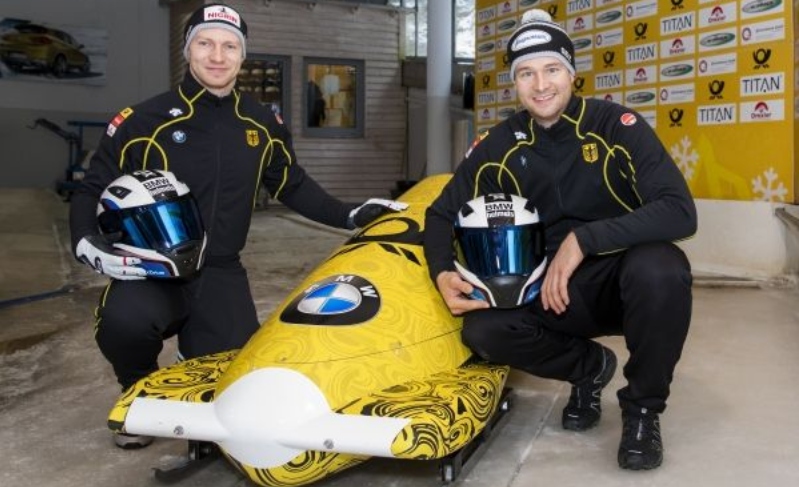 Successful test series for BMW two-man bobsled prototype on the ice tracks in Königssee and Altenberg.
Successful test series for BMW two-man bobsled prototype on the ice tracks in Königssee and Altenberg.
First sled developed entirely using computer simulations sets new design process standards with promising results.
Olympic gold medalist Francesco Friedrich: “The BMW prototype is really very good.”
BMW two-man bobsled will be further optimised with the aim of it being in action in the 2019/2020 World Cup season.
The development of a BMW two-man bobsled, which is the result of the partnership with the German Bobsleigh, Luge, and Skeleton Federation (BSD), has reached an crucial milestone: Test rides at Königssee and in Altenberg delivered promising results.
The sled concept developed exclusively using computer simulations and verified in the BMW Aerodynamic and Research Center has proven successful. Additional optimisation potential for the prototype will be identified during further test rides in the coming weeks and will feed into the design of a new sled. The goal is to use this in the coming 2019/2020 World Cup season.
At the end of a development and test phase that lasted ten months only, the BMW prototype passed its baptism of fire with flying colours. With double Olympic champion Francesco Friedrich, world champion Johannes Lochner and junior world champion Christoph Hafer on the steering handles, the run times at the test rides at Königssee and on the demanding track in Altenberg were within a few tenths of a second of the current World Cup bob.
A measuring system provided by BMW Motorsport and modified for bobsleds evaluated and compared all of the rides. Friedrich’s impressions were extremely positive.
“It’s fascinating: BMW takes something on, and at the first attempt it is really very good. So many companies have already tried to build a sled, which was then mothballed after three days. In contrast, the BMW prototype has already come a long way. The bob runs really well and you can steer it precisely,” said the overall World Cup winner. “The BMW engineers work very meticulously and with a lot of passion to make sure it is as fast as or faster than the others.”
The innovative approach to the development of the new two-man bob started from nothing, oriented itself on BMW vehicle development and focused on the replicability of the sled. It was also about finding the perfect balance between the stability and agility of the sled.
Initially, the design was developed exclusively using computer simulations and the aerodynamics were optimised using the “computational fluid dynamics (CFD)” numerical method. Around 10,000 different forms were calculated, including “digitalised athlete dummies”: To develop sporting equipment with the ideal ergonomics for the various BSD drivers and crewmen, the athletes were scanned, and their body dimensions were incorporated into the calculations.
The design developed this way, considering aerodynamic and ergonomic aspects was initially milled as a foam model, the values calculated on the computer were verified in the BMW Group Aerodynamic Test Centre and optimised in line with the analysis results obtained. This form was manufactured using carbon to ensure reproducibility. The cutting of the individual carbon layers was computer-controlled, and these carbon layers were placed such that the sled is able to absorb the huge G forces in the ice track optimally. Then, the model was baked in an autoclave at 175 degrees. Thomas Hahn’s, head of the BMW technology transfer, development team received support from the BMW partner network in the motorsport sector.
“The approach and pioneering spirit of our technology partner BMW is impressive time and again,” said Thomas Schwab, general secretary and sports director of the BSD. “We are delighted that in the BMW prototype an innovative approach demonstrated its great potential right from the start and are excited to see what further development brings.”
Hahn is very pleased with the intermediate result and said: “The initial test results are promising – both at Königssee and on an extreme track like the one in Altenberg. We started with a blank sheet of paper and it turned out that our calculations stood the test in practice. Now we need to push the limits further in additional tests and based on these results, identify the areas in which we can make improvements.”

































